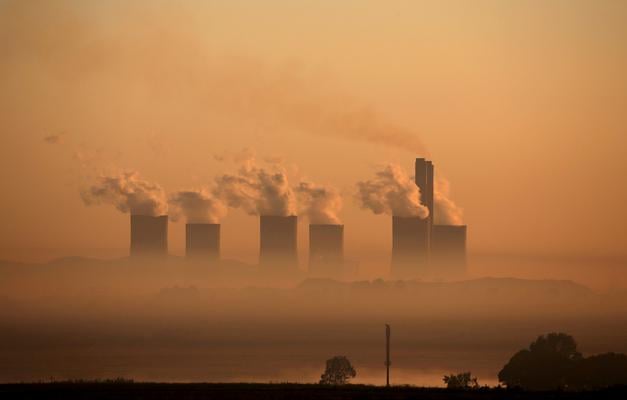The power utility must clean up its act, but doesn't have the money to pay for doing so.

FILE PHOTO: Steam rises at sunrise from the Lethabo Power Station, a coal-fired power station owned by state power utility Eskom near Sasolburg, South Africa, March 2, 2016. Picture: REUTERS / Siphiwe Sibeko
Embattled power utility Eskom managed to keep the lights on in winter and aims to continue averting load shedding, while balancing the need to increase maintenance to protect against the risk of unreliable plant performance.
Earlier this year the country experienced weeks of extended outages, with 4,000 megawatts (MW) of electricity wiped from the grid at a time. The most obvious impact of this was a 3.1% plunge in GDP in the first quarter.
At a briefing on the state of its operations on Wednesday, Eskom chief operations officer Jan Oberholzer told journalists that after implementing the winter plan, Eskom managed to stave off power cuts for 164 days.
“We have to be fair as well – the demand was lower for most of winter due to warmer weather and the economic climate,” said Oberholzer.
The idea is that Eskom will be able to maintain the momentum as part of its summer plan over the next seven months. However, Oberholzer said the power system remains “tight and vulnerable” as temperatures rise, which impacts some power stations such as Matimba in Limpopo.
Emissions
Oberholzer said that in Eskom’s nine-point turnaround plan, the focus had moved from ‘prepare for the rain’ to reducing emissions, particularly at seven of the 87 generation units where the levels are high.
This has raised the spectre of further blackouts. The potential closures could cut a 10th of Eskom’s 45,000MW production capacity, but heavy reliance on ageing, polluting coal-fired power stations is not sustainable.
“It is important to understand that if we don’t fix this and reduce the risk of emissions, there is a risk that we will have to shut down some of the units – that is a risk of 4,500 megawatts,” he said.
“It’s a significant challenge for us.”
Mabuza said that solving the emission problems instantly would cost R300 billion, money the cash-strapped utility – which currently has debt of R440 billion – doesn’t have.
A snapshot of the generation side of the utility shows that it is still grappling with unpredictable and unreliable plants. Oberholzer said that while Eskom has done a lot of maintenance in the year to date, it experienced 249 system trips, which was beyond the 159 target.
Partial load losses
Oberholzer said partial load losses – power stations not operating at capacity – are one of Eskom’s biggest issues and account for almost half of the outages.
“That’s when you have a vehicle that says you can do 120, but when you put your foot down you only get 80 out of it,” he said.
The Kendal, Arnot, Tutuka, Medupi and Kriel power stations accounted for about 62% of all partial load losses so far this year.
But Eskom had made progress in returning its coal stockpiles to healthy levels. In November last year, 10 of its 15 power stations had stockpiles below the company’s accepted minimum of 20 days, with five having stockpiles of less than 10 days.
As at September 3, all power stations except for Kriel had stockpiles above the grid code. Oberholzer said that while Eskom had the volumes, it now had to deal with the quality of the coal.
There has been an improvement in plant performance, which increased from 67% at the beginning of the year to 70.4%.
“Our objective over summer is to continue to avoid load shedding, continue our plant performance and continue our maintenance,” said Eskom chair and acting CEO Jabu Mabuza.
Summer scenarios
Operationally, according to energy expert Chris Yelland, Eskom has presented a credible plan that does not oversell what can be achieved.
“He [Oberholzer] did make it clear what could be achieved and that it is going to require hard work [and] overtime, and that gives me a measure of satisfaction that they have a grasp of the issues,” said Yelland.
However, he pointed out that the utility’s power plants were getting old and this meant they would require more work and money, not only to keep them online but to obtain environmental compliance in terms of their emissions.
“First of all, they don’t have the money and second of all it is hardly worth it because it takes a long time to do this work and, by that time, the power stations could be decommissioned anyway.”
Brought to you by Moneyweb
Download our app